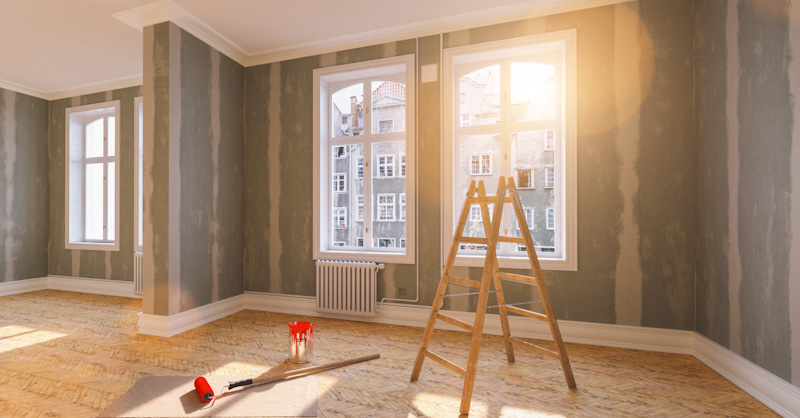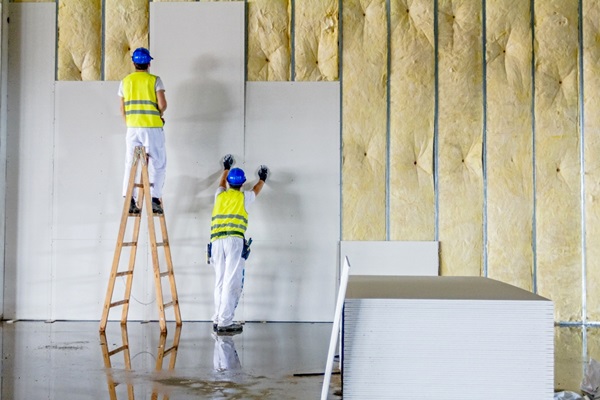Comprehensive Drywall Contractor Support for New Builds
Comprehensive Drywall Contractor Support for New Builds
Blog Article
Drywall Setup Made Easy: Tips for Perfect Outcomes
Drywall setup is usually viewed as an overwhelming job, yet with the appropriate approach and knowledge, it can end up being a convenient endeavor. Choosing high quality products and preparing the setup location are critical primary steps that set the structure for success. Grasping methods for cutting, hanging, and ending up drywall can considerably affect the outcome. As we explore these vital tips, you may find that even the tiniest adjustments in your method can cause incredibly boosted outcomes, leaving you to take into consideration exactly how these practices can transform your next project.
Picking the Right Materials
Selecting the ideal materials for drywall installment is crucial to achieving a durable and visually pleasing coating. drywall installation. The main component, drywall sheets, normally can be found in different densities, with 1/2-inch sheets being standard for interior wall surfaces. For areas requiring extra moisture resistance, such as restrooms or kitchens, take into consideration making use of green board or concrete board, which are specifically made to withstand humidity

Additionally, picking the appropriate bolts-- either nails or screws-- is essential for protecting the drywall to the framing. Drywall screws are typically favored for their holding power and reduced risk of standing out. Lastly, think about the finishing touches such as guide and paint, which not only improve the appearance yet also protect the drywall from moisture and wear.
Preparing the Setup Area
Prior to starting the drywall installment process, it is vital to prepare the installment location extensively. A tidy workspace lessens the risk of damage to existing things and enables for reliable activity throughout installment.
Following, check the wall surfaces and ceiling for any type of imperfections, such as cracks, openings, or mold and mildew. Address these concerns beforehand; patch any type of damages and enable adequate time for repair work to dry. Additionally, make certain that electrical outlets, buttons, and plumbing are correctly placed and made up, as this will certainly influence drywall placement.
Consider the ecological conditions as well. A stable temperature level and moisture level are vital for optimum adhesion and performance of the drywall materials. If needed, use a dehumidifier or heater to develop suitable problems.
Cutting and Hanging Drywall
The trick to efficient drywall setup hinges on the exact cutting and dangling of the panels. Begin by measuring the room precisely, thinking about any obstructions such as electrical outlets or windows. Use a straight edge and an energy blade to rack up the drywall along your measurements, then break it along the scored line for a clean break. For even more detailed cuts, such as around outlets, a drywall saw can be utilized for precision.

Constantly work from the top down and delegated right, making certain that you maintain a staggered pattern to enhance stability. Effectively hanging the drywall official website establishes the foundation for a smooth finish, inevitably leading to premium lead to your drywall job.
Insulation and Mudding Techniques
While proper cutting and dangling of drywall establishes the stage, the following important step involves grasping taping and mudding methods to make certain a smooth finish. Insulation is important for enhancing joints and stopping fractures; it entails embedding tape into the applied joint compound (mud) Start with a top quality fiberglass or paper tape, applying the tape over the joint and pushing it into the wet mud making use of a taping blade, guaranteeing no air bubbles continue to be.
When the tape is in place, apply a slim layer of joint substance over the tape, feathering the sides to produce a smooth transition to the drywall surface area. Permit this layer to dry entirely prior to sanding it gently to eliminate imperfections. Repeat this procedure, using added coats of mud as needed-- typically a couple of coats-- while gradually widening the application area with each layer to achieve a seamless look.
After the final coat dries, sand the surface with a fine-grit sandpaper until smooth. drywall fort worth. Remember to wear a mask throughout sanding to stay clear of inhaling dust particles. Mastering these Full Article taping and mudding techniques is vital for achieving a professional-quality finish in your drywall installation
Ending Up Touches for Excellence
Accomplishing a remarkable drywall installment surpasses taping and mudding; it finishes in the ending up touches that raise the overall look. These final actions are essential in guaranteeing a professional-grade coating that improves the visual appeals of your room.
Begin by fining sand the dried out joint substance to develop a smooth surface area. drywall installation. After sanding, clean down the wall surfaces with a wet cloth to remove any dirt bits, making sure a clean surface area for painting.
Next, apply a primer especially made for drywall. This action is crucial, as it helps secure the joint compound and provides an uniform base for the topcoat. Once the guide dries, check for any blemishes, and touch up as required.
Verdict
Finally, successful drywall setup hinges on the mindful choice of products, extensive preparation of the setup location, and precise implementation of reducing and hanging methods. Mastery of taping and mudding processes is necessary for attaining a smooth surface. Additionally, attention to finishing touches, including priming and touch-ups, ensures a professional-grade result. By sticking to these standards, the quality of craftsmanship can be substantially boosted, contributing to the total visual and capability of the room.
Drywall installation is often viewed as a daunting job, yet with the appropriate method and understanding, it can become a workable endeavor.Selecting the suitable materials for drywall installation is critical to achieving a durable and visually pleasing finish.Prior to beginning the drywall installment procedure, it is important to prepare the installation area extensively. Understanding these taping and mudding strategies is critical for attaining a professional-quality finish in your drywall installation.
In verdict, successful drywall setup hinges on the cautious selection of products, detailed preparation of the installment area, and precise execution of reducing and hanging methods.
Report this page